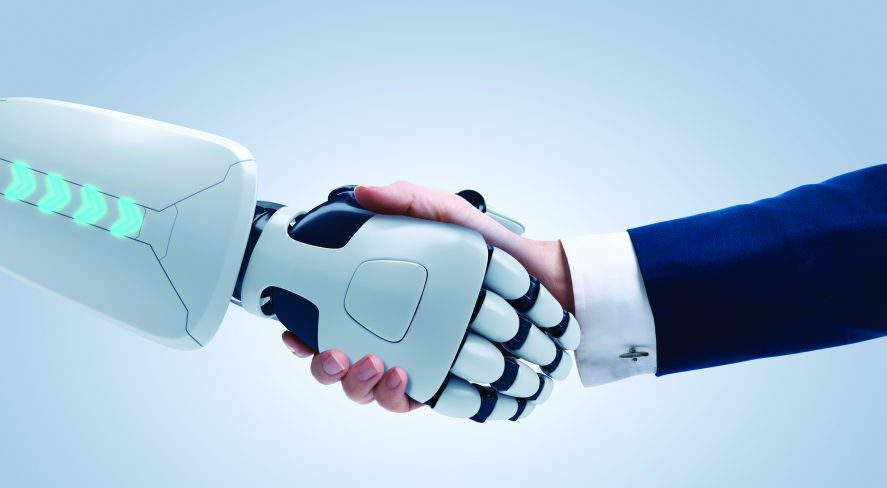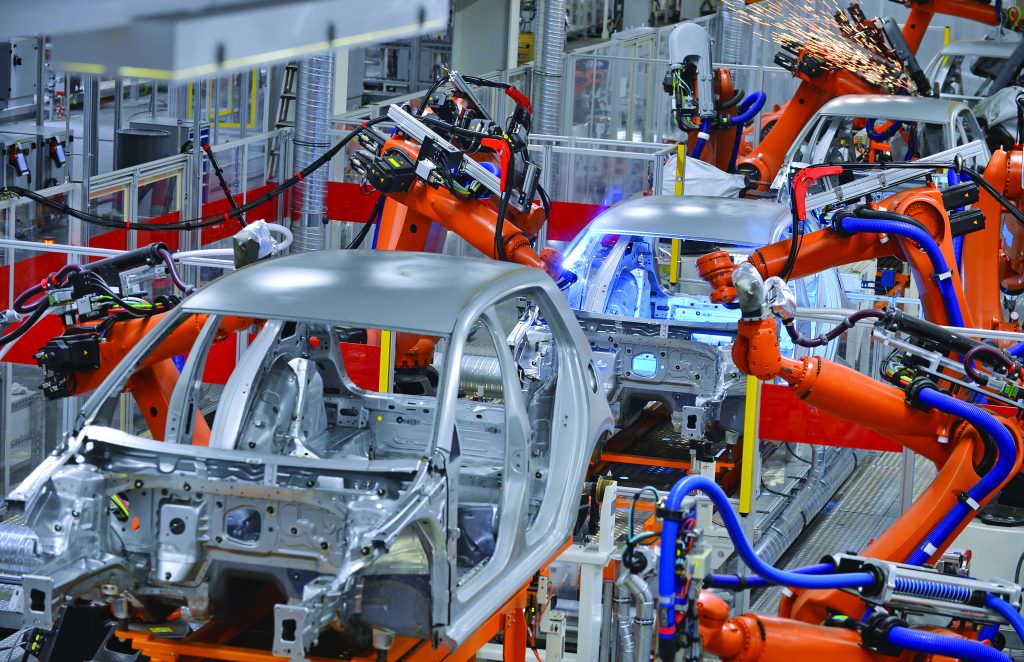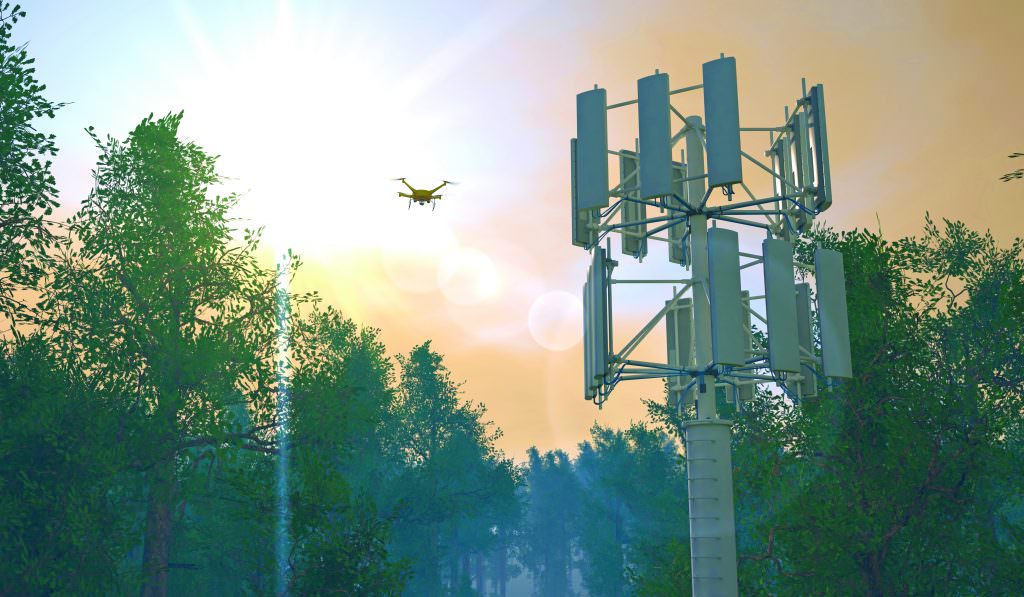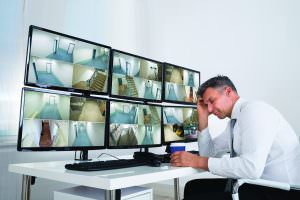The Rise of the Machines

Robots can terminate tedious tasks for security personnel

Alice DiSanto, Sharp Robotics Business Development
Suppliers of air, land and sea robots appear to be in full agreement that these technologies will liberate people from routine guarding tasks, which are repetitive, mundane and at times dangerous, so they can shift their attention to more critical, intelligence-based work.
Who would not rally around handing off certain unfavorable parts of a job to a robot? After all, we have seen or experienced robotic successes in other applications, such as auto-attendant, airport check-in, manufacturing assembly lines, and the stocking of distribution center shelves. In these examples, robotic automation has led to greater speed, efficiency, quality, and productivity. One need only think about the holiday shopping season and the exponential improvements that have resulted from online retailers implementing automation that speeds the fulfillment of orders.
The security industry is ripe to incorporate robotic technological advancements into the protection arsenal. Worldwide spending on robotics and related services in 2020 is projected to be double what it was in 2016.
To not embrace robotics would be to miss out on the next great industry advancement to automate targeted and routine safeguarding duties.
That said, not all robot manufacturers are created equal. Optimism about the technology is best balanced by critical thinking throughout the evaluation process to find the right solution. Here are some key consideration points when identifying the right resource to satisfy a facility’s security needs.
Understand Customary Capabilities
Robots can be deployed to defend against intrusions, respond to disasters, and inspect for vulnerabilities while allowing their human counterparts to remain safely apart from frontline threats. They operate in either semi-autonomous or fully autonomous mode.

Their capabilities, however, should not be exaggerated or overstated to the point of Hollywood fiction.
Instead, the focus should be on what robots are customarily good at versus what humans do well.
Robots are good at:
- Tireless operation
- Performing repetitive tasks consistently
- Operating in dangerous environments
- Recording events
- Real-time location and activity information
Humans are good at:
- Complex decision-making
- Multi-sense and unclear object perception
- Interacting with people; giving and understanding information
- Responding to random situations
- Undefined object or pattern identification

Collaboration and Automation
Together, man and machine can increase the effectiveness of security solutions and create better outcomes. The caveat is that you must select a robot that has been tested and approved for safe operation around people and objects in order for true collaboration to take place. Be sure to ask your provider for documentation (or a certification) of safety and reliability testing. Do not just assume that the tests have been run and third-party validation has been made.
Once you have found a product that has been safety tested, put it to work under the direction of your trained and experienced guard force. Allow your personnel to make process improvements using the new technology. Your human security force has a wealth of frontline know-how that can be used to delegate the full spectrum of required tasks, customize the technology to your exact needs, and enable you to cover operational shortfalls that, without robotics, were too time-consuming, too risky, or simply impossible.
Look Under the Hood
This is meant literally and figuratively. Given the ease of rudimentary construction, almost anyone can build a robot these days. Know the reputation and staying-power of the company that will be supplying the robot. What is the firm’s track record of engineering, manufacturing, logistics, and maintenance? Is there a succession plan for the technology to remain state-of-the-art? Will the company be around to support the product through its entire lifecycle?
Next, actually look inside the robot. Is the design clean or is there a tangle of wires? Has the hardware undergone environmental extremes and endurance testing? What about the software? Is the interface intuitive and clear? Do the hardware and software truly work in tandem, with full operational control and telemetry?
Network Design is Key
 Given the sensing and communication features of the security robots entering the marketplace, you need to have peace of mind that the data being procured and transmitted is kept confidential. Question vulnerabilities of disruption or interception. Is the network susceptible to hacking due to lack of encryption and dedicated IP addresses? What about the speed and bandwidth? The network is the direct line between the robot (or robots) and the brains of your security command center. The supplier should have a plan to address your need to maintain control of the technology traveling around the complex and to preserve the proprietary data that it collects.
Given the sensing and communication features of the security robots entering the marketplace, you need to have peace of mind that the data being procured and transmitted is kept confidential. Question vulnerabilities of disruption or interception. Is the network susceptible to hacking due to lack of encryption and dedicated IP addresses? What about the speed and bandwidth? The network is the direct line between the robot (or robots) and the brains of your security command center. The supplier should have a plan to address your need to maintain control of the technology traveling around the complex and to preserve the proprietary data that it collects.
Change Is Never Easy
Technological changes require adaptation, and that creates challenges. Who has not purchased the latest cell phone and experienced either user-error frustration or an operational glitch? When you do not understand the impact of a new technology, or it does not work exactly as expected, everyone around is in turmoil. This reaction to change happens every time a fresh technology emerges.
Think of the introduction of the automobile. Cars were a replacement for horse-drawn carriages, which congested urban streets with thousands of horses and the 35 pounds per day of waste produced by each horse. Though the automobile rid cities of a huge “dirty” problem, putting them into use brought about pains of change for communities. There were the usual user-errors and operational glitches, but the technology also had a broader impact because cars created a need for enhanced infrastructure, gas stations, traffic laws, etc. Similarly, introducing robotics into the workplace, for all the benefits that will result, will inevitably create issues that need to be addressed.
Robotics will bring about a change in job descriptions within organizations, and not just in the security department. Fresh opportunities will emerge with the adoption of automation. Certain functions will become outdated and companies will reduce the headcount for security tours and safety inspections. At the same time, though, they will add openings for robot operators and technicians.
Look for a supplier that acknowledges the fact that change, on both the individual and organizational levels, is hard. Pick a supplier who offers training, tools, and techniques to ease the technological transition and accelerate adoption.
There Will Be Edsel Moments
Sticking with the automobile theme, some of the robots introduced to the security market will either be marketing failures, like the Ford Edsel or will be criticized for some sort of shortcoming. As you evaluate your robot supplier, do not allow negative headlines to get in the way of the gains that can result from integrating robotics as a security solution.
Some suppliers will experience major Edsel-like failures because they did not thoroughly research their target market’s needs. As for the negative press, mistakes are inevitable. But from error should come improvement, so look at how the supplier recovers from the situation and notice if missteps are repeated.
The Time Is Now
Robots for security are an investment. The products you choose should integrate with your current infrastructure of people and technology. If upgrades in the network are required, understand that this outlay will also support a wide variety of voice, video and data applications in other areas of your organization.
Optimism about robotics technology is well-founded. Overly positive assumptions can lead to problems, but the bigger picture is that you do not want to be left behind.
Be an early adopter, but shop with discretion.
A balance of enthusiasm and critical thinking when it comes to technology will keep expectations in check. To make progress, we need to imagine better solutions to our current challenges. Many of the risks we face are being perpetrated through malicious uses of technology. Having robots on our side to better protect people, infrastructure and assets strengthen the security industry.
Alice DiSanto (disantoa@sharpsec.com) is the director of marketing for Sharp Robotics Business Development (www.sharpintellos.com)
